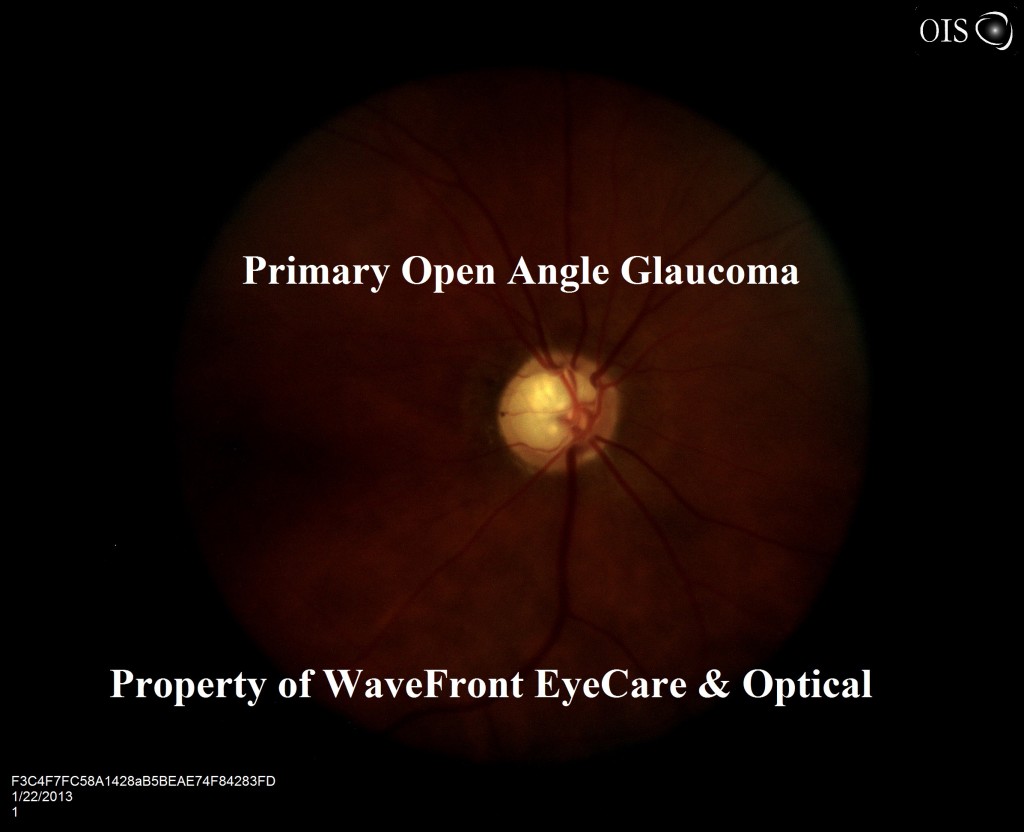Healthy Retina
During a dilated eye exam the doctors of WaveFront EyeCare & Optical will have a greater view of the back of the eye to screen for various eye diseases. We will check to see that the optic nerve is not damaged by increased ocular or intracranial pressure. The blood vessels of the retina will be examined for plaques or signs of obstruction or leakage. The macula will be assessed for signs of degeneration or scarring. Finally, the overall retinal surface will be screened for tears or degeneration.
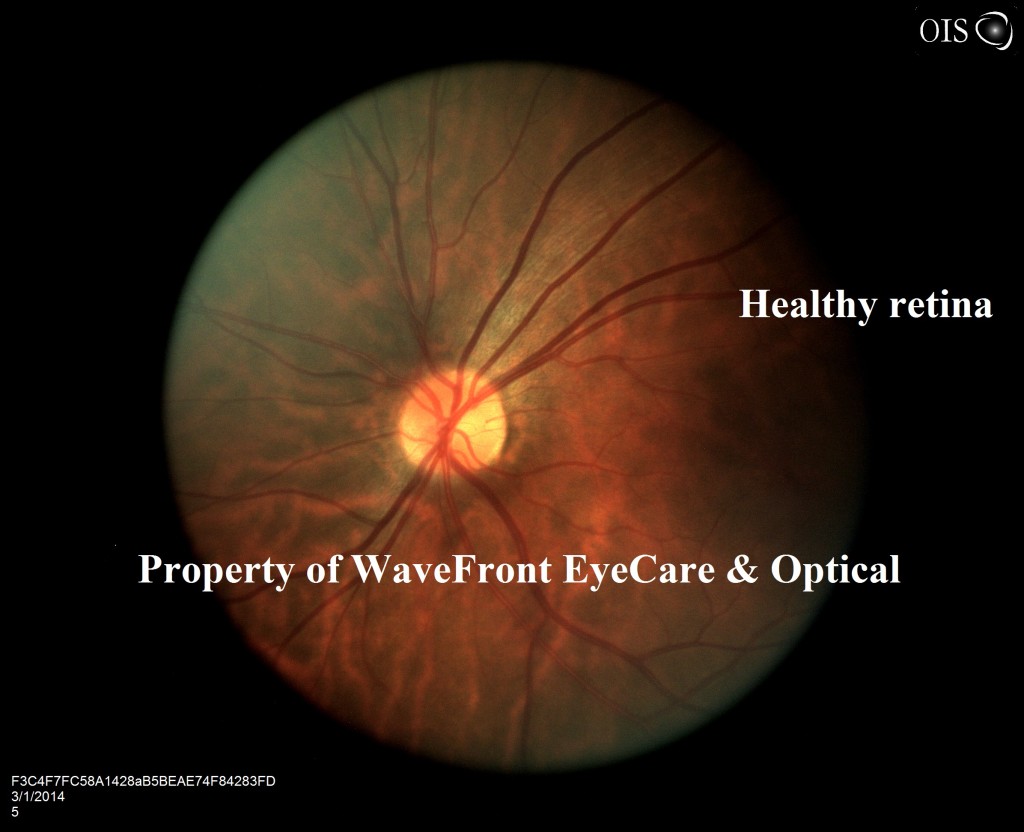
Retinitis Pigmentosa
Retinitis pigmentosa (RP) is an inherited form of retinal dystrophy that causes severe visual impairment and often blindness. RP is caused by abnormalities of the photorepector cells (rods and cones) of the retina leading to progressive sight loss. Those affected exhibit night blindness and degeneration of the peripheral visual field resulting in tunnel vision.
These signs usually appear during childhood and worsen gradually throughout adulthood. Currently, there is no cure for RP, but research indicates that nutritional supplements containing Vitamin A and lutein may slow the rate of progression of the disease.
Also, there are many new low vision aids, including telescopic and magnifying lenses, night vision scopes as well as other adaptive devices, that are available to help those with RP maximize the vision that they have remaining.
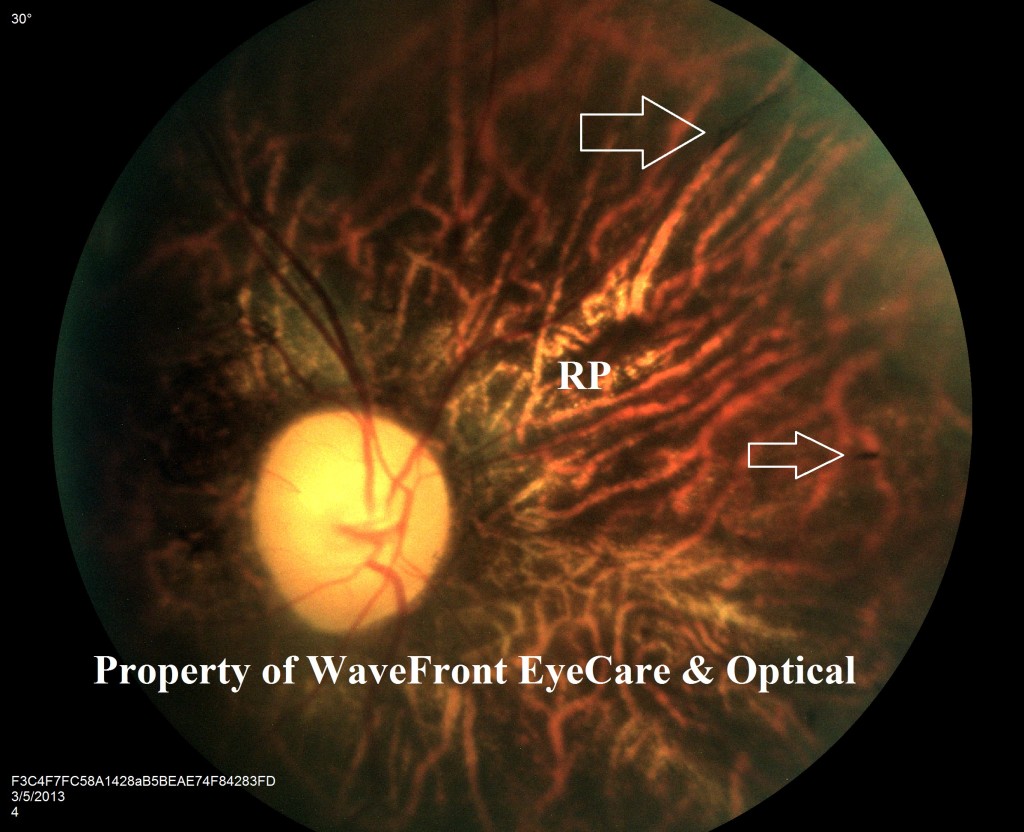
Foreign Body
A foreign body (FB) is a type of ocular trauma that can lead to vision loss if not promptly treated. A person with a FB can present with symptoms of redness, pain, light sensitivity, irritation, and swelling. The most common type of FB is when metallic projectiles from welding get embedded into the cornea. This type of FB should be taken out as soon as possible to prevent a rust ring and/or scarring. Other types of foreign bodies include: wood or paint particles, contact lens fragments, sand, and glass shards. A FB can cause abrasions to the surface of the eye as you blink, thus antibiotics may be prescribed to prevent infection of these open wounds. In rare cases a FB can penetrate the eye becoming an intraocular object, as a result of a high-speed projectile. Signs of intraocular objects include the presence of discharge or blood from the eye, these cases need immediate attention. Prevention is the key to limiting your likelihood of getting a FB. Safety glasses should be worn at all times while welding or doing woodwork, and even when mowing the grass. If you have a FB and it does not rinse out with saline, then you should not attempt to remove it yourself, it may become embedded further, or you may scratch the surface of your eye. At your visit we will numb the eye’s surface and utilize a variety of tools to safely remove the FB without causing further damage to the ocular surface.
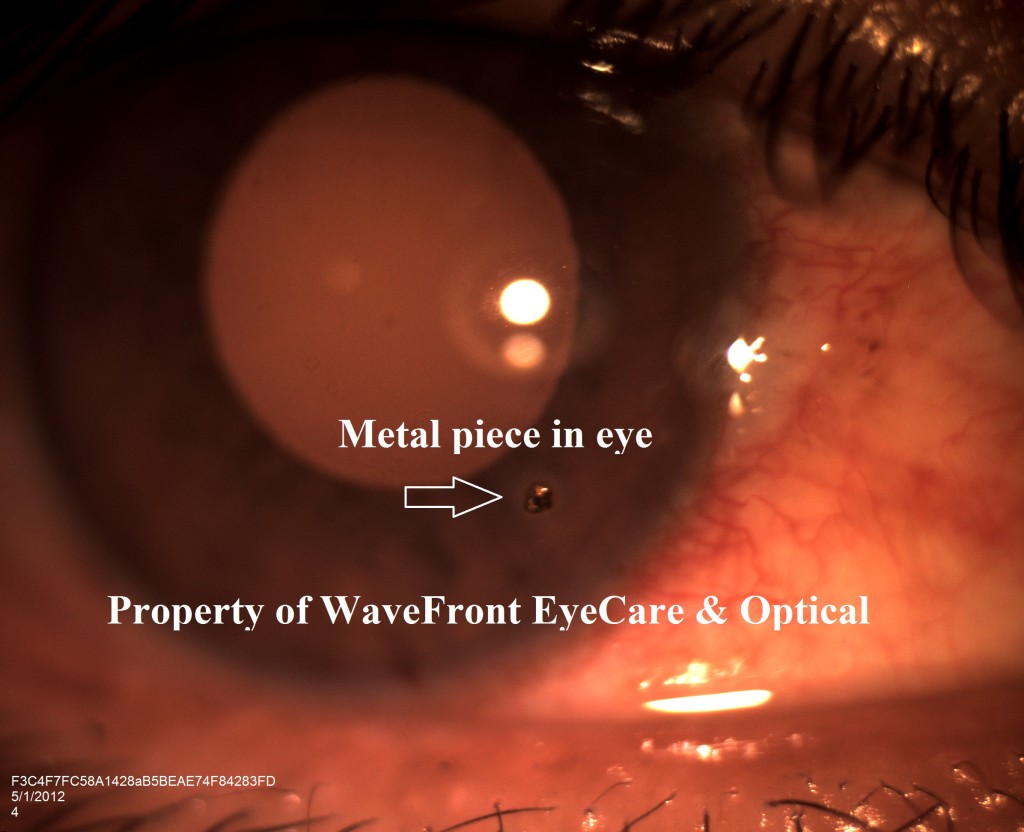
Age-Related Macular Degeneration
Age-Related Macular Degeneration (AMD) is a debilitating disease that affects the portion of the retina that is responsible for central vision.
Some common symptoms include: distorted vision, a gradual loss of color vision, and a dark or empty area appearing in the center of vision.
Macular degeneration is usually an inherited disease; however, being over the age of 60 or a history of smoking can put you at risk.
Research studies indicate certain vitamins and antioxidants may help prevent or slow the progression of macular degeneration.
Dilated fundus examination is the gold standard for diagnosing AMD. There are currently two forms of AMD, dry and wet. The majority of patients affected will have dry AMD, where the central vision is deteriorated but stable. The more destructive form is the wet form, in which the central ophthalmic blood network produces an extensive amout of blood underlying the retina, which will gradually destroy the central vision and possibly lead to permanent blindness.
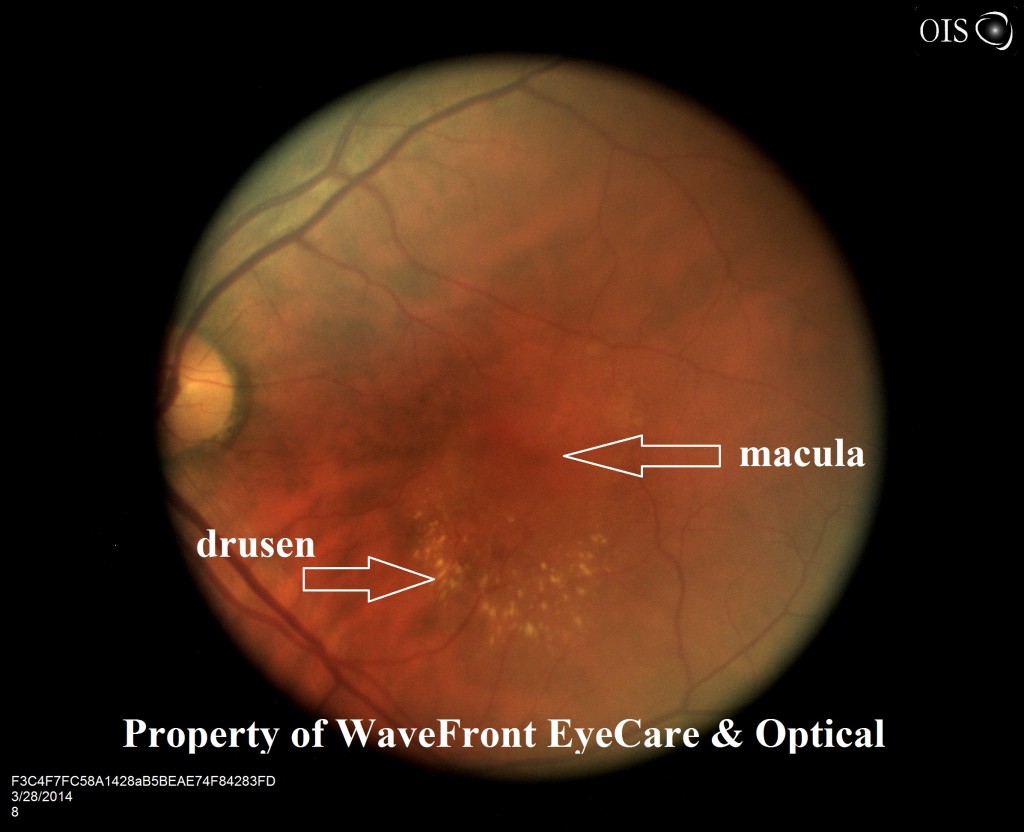
Astigmatism
Astigmatism is a vision condition that causes blurred vision due either to the irregular shape of the cornea or sometimes the curvature of the lens inside the eye. An irregular shaped cornea or lens prevents light from focusing properly on the retina. As a result, vision becomes blurred at any distance.
Astigmatism is a very common vision condition. Most people have some degree of astigmatism. Slight amounts of astigmatism usually don’t affect vision and don’t require treatment. However, larger amounts cause distorted or blurred vision, eye discomfort, squinting, and headaches.
Astigmatism frequently occurs with other vision conditions like nearsightedness (myopia) and farsightedness (hyperopia).
The specific cause of astigmatism is unknown. It can be hereditary and is usually present from birth. It can change as a child grows and may decrease or worsen over time.
Cataract
Cataract is a cloudy or opaque area in the normally clear lens of the eye. Depending on its size and location, it can interfere with normal vision. Most cataracts develop in persons over age 55, but they occasionally occur in infants and young children. Usually people develop cataracts in both eyes, but one eye may have somewhat worse vision than the other. Cataracts generally form very slowly. Symptoms of a cataract may include:
- Blurred or hazy vision
- Colors of objects may not appear as bright or it may be more difficult to distinguish between certain colors
- Increased sensitivity to glare from lights, particularly when driving at night
- Seeing multiple images
- Difficulty seeing at night
- Temporary improvement in near vision
The only treatment for cataracts is through surgery where the lens of the eye is replaced with an implant to restore vision.
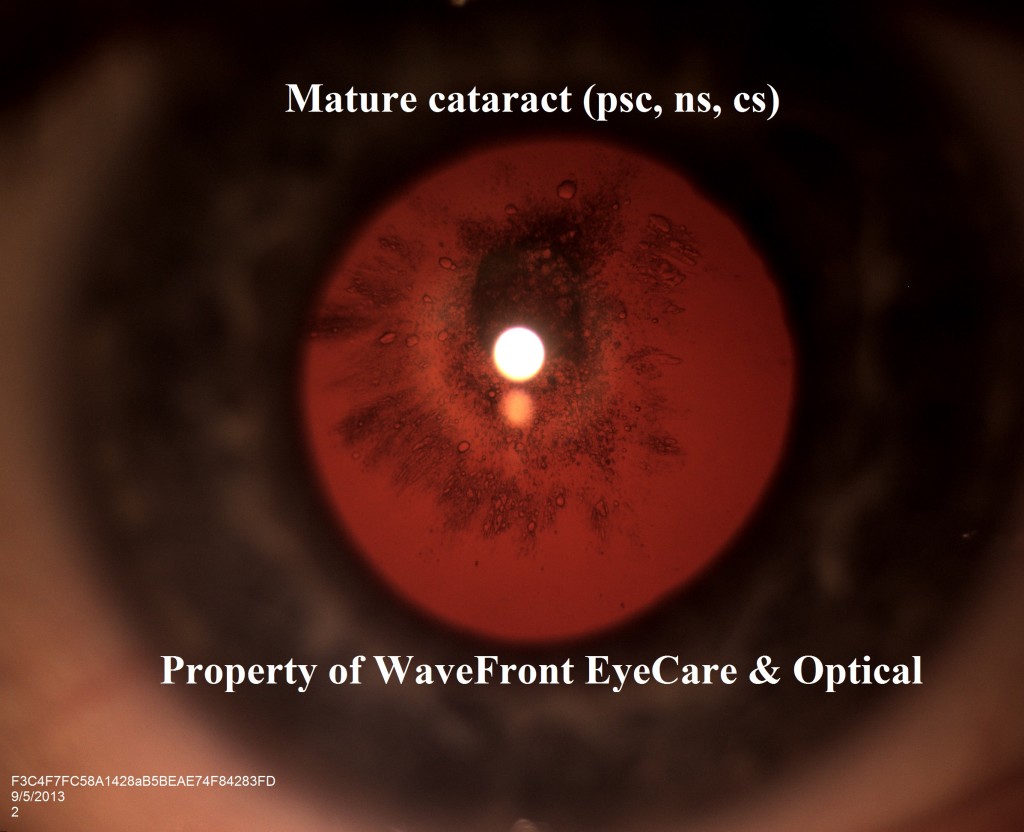

Diabetic Retinopathy
Diabetic Retinopathy occurs when uncontrolled diabetes causes damage to the blood vessels that nourish the retina. These blood vessels may begin to leak, swell or develop abnormal branches. The early stages of diabetic retinopathy may cause blurred vision, or they may produce no visual symptoms at all. As the disease progresses, you may notice a cloudiness of vision, blind spots or floaters. If left untreated, diabetic retinopathy can cause irreversible blindness, which is one reason why it is important to have your eyes examined regularly. This is especially true if you are a diabetic or if you have a family history of diabetes.
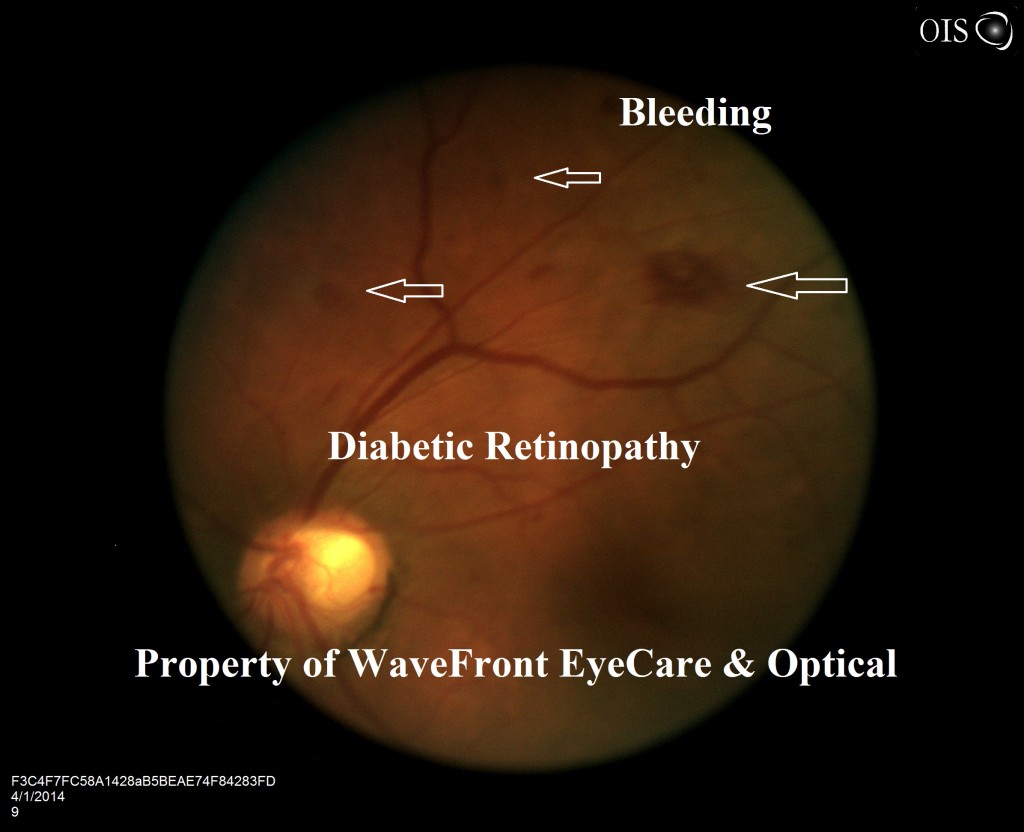
Dry Eye
Dry Eye is a condition where your eyes either do not produce enough tears or produce tears without the proper chemical composition.
The tear film consists of three layers: an oily layer, a watery layer, and a mucus layer. Each of these layers is necessary to provide your eye with the necessary lubrication to feel comfortable. In some instances, you can have excessive tearing as a symptom of dry eye, this occurs as the body’s natural defense against irritation if the eye is not well lubricated.
Dry eye can occur as part of the natural aging process, or be caused by blinking or eyelid problems, medications like antihistamines, oral contraceptives and antidepressants, a dry climate, wind and dust, general health problems like arthritis or Sjogren’s syndrome and chemical or thermal burns to your eyes.
If you have dry eye, your symptoms may include irritated, scratchy, dry, uncomfortable or red eyes, a burning sensation or feeling of something foreign in your eyes and blurred vision. Excessive dry eyes may damage eye tissue, scar your cornea, and impair vision and make contact lens wear difficult.
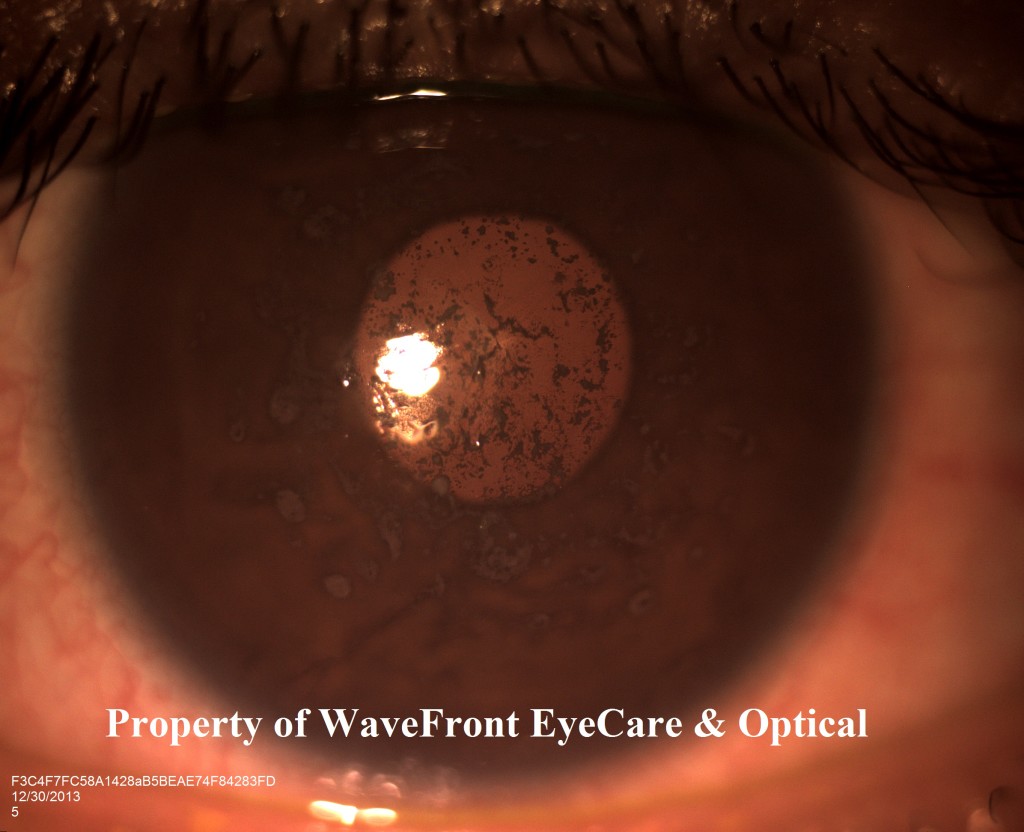
Glaucoma
Glaucoma is when the passages that allow fluid in the eye to drain become blocked. This leads to an increase in the internal pressure of the eye which in turn compresses the optic nerve.
As the optic nerve is damaged the ability for the nerve to send information to the brain is compromised leading to vision loss.
Vision lost to glaucoma cannot be restored. That is why the American Optometric Association recommends annual eye examinations for people at risk for glaucoma.
With early intervention glaucoma can be managed and further vision loss can be prevented.
Risk factors include: over age 40, family history of glaucoma, African Americans, Hispanic, and those who are very nearsighted or diabetic.
The treatment for glaucoma includes prescription eye drops to lower the pressure in your eyes. In some cases, laser treatment or surgery may be effective in reducing pressure.
